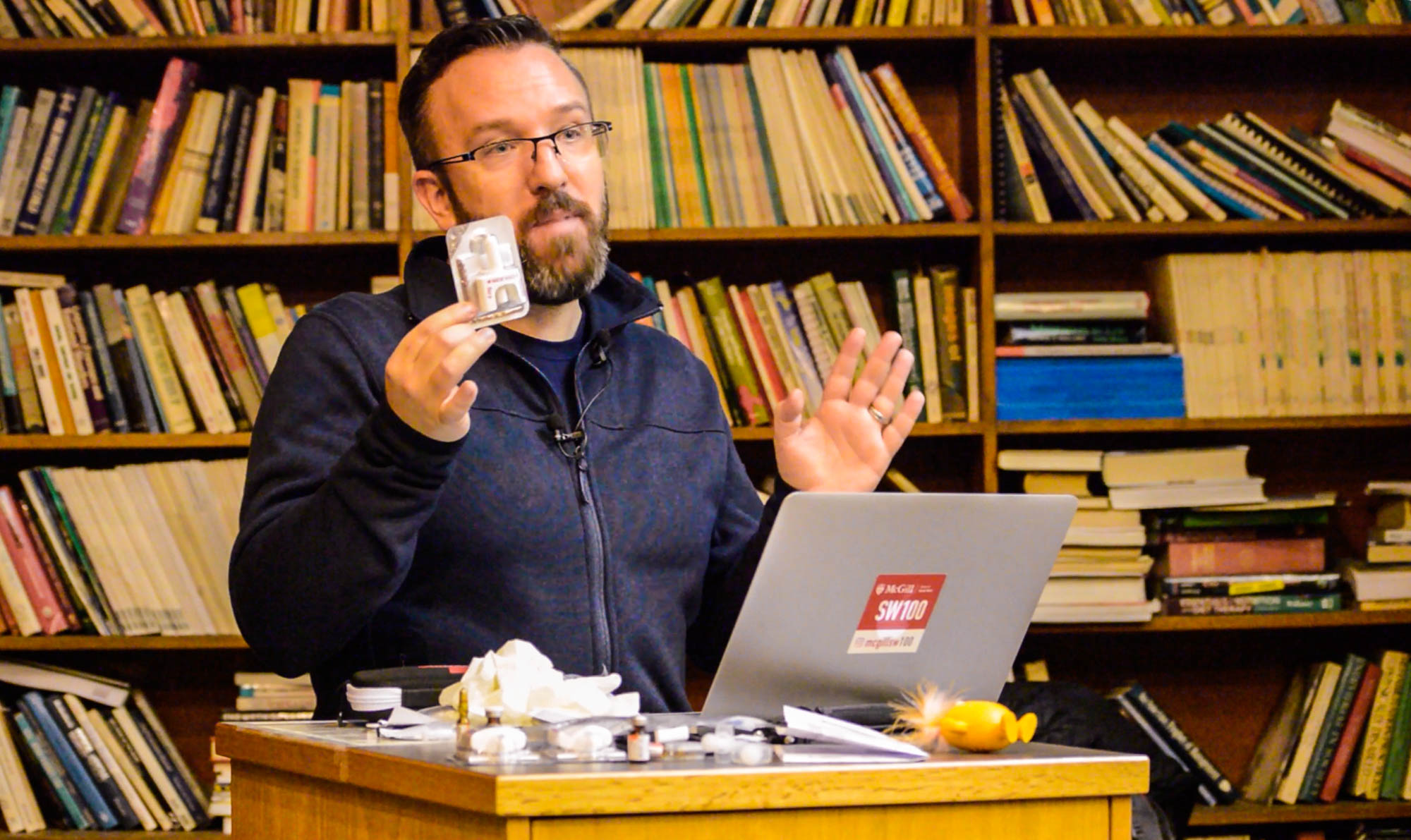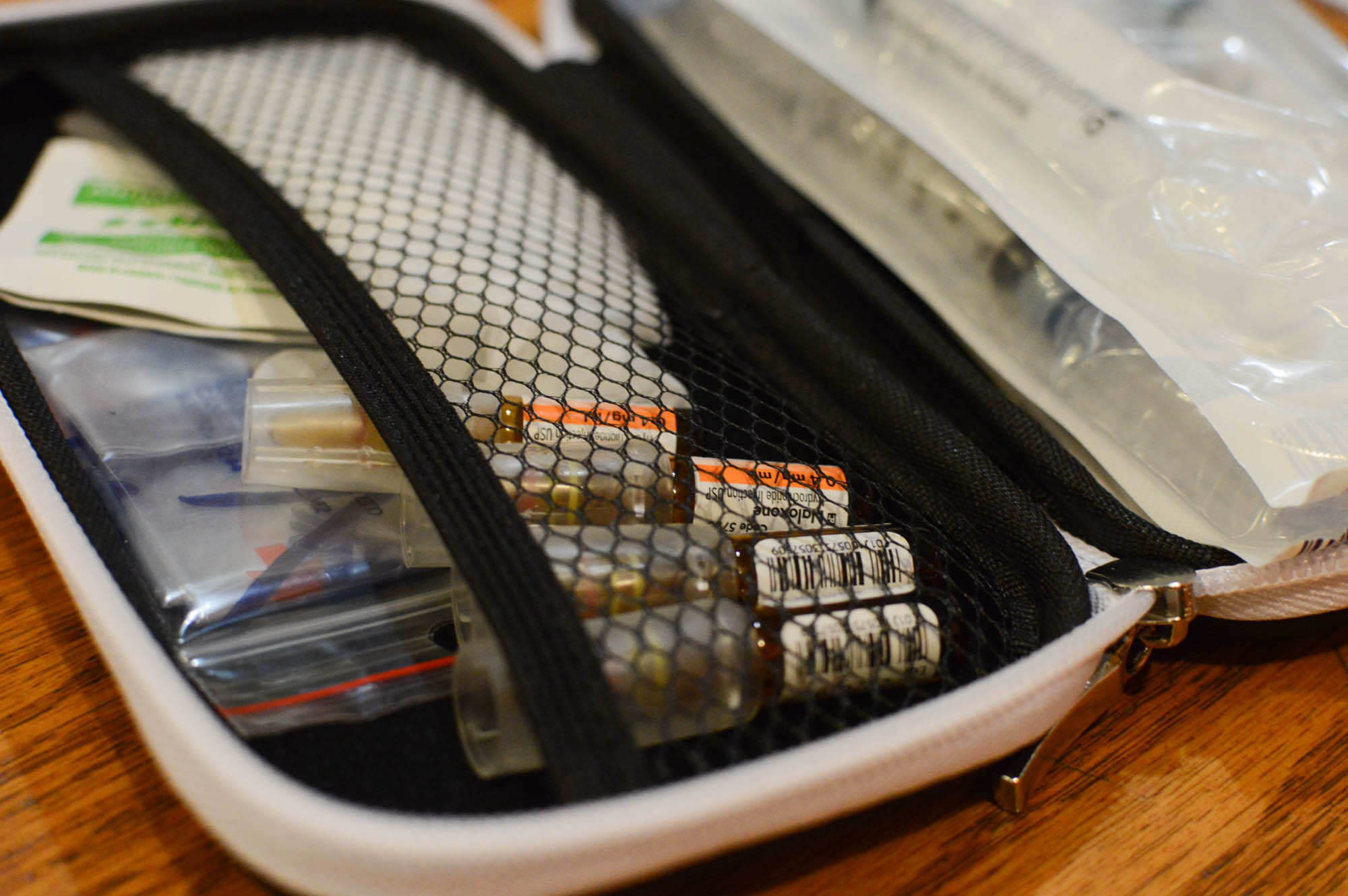Saving lives and breaking down stigmas with public education
“I’m here today because there isn’t a very effective public education program,” said Richard Davy, a first-year social work student at McGill, after wrapping up the first in a series of naloxone training sessions he’s holding in November. To Davy’s delight, his first presentation on Nov. 7, which amassed an assorted crowd of students, community members and TV news crews, was a success. “People aren’t aware of this, even though we’ve known about naloxone for what seems like forever,” he added.
Naloxone, also known by its brand name Narcan, is the substance used to reverse an opioid overdose. Once administered, either nasally or through muscular injection, the naloxone blocks opioid receptors in the brain and temporarily alleviates some of the life-threatening effects of opioids. In cases of accidental overdose, it is often family, friends or bystanders who are tasked to recognize and treat an overdose, so the naloxone kits are designed to be easy-to-use for non-medical professionals.
Naloxone is also fairly easy to access; in 2017, the Quebec government began offering free naloxone kits in Quebec pharmacies to anyone 14 or older. The decision was made in reaction to the rising opioid-related hospitalization rates across Canada over the past decade. According to former Quebec Health Minister Gaétan Barrette, this was also part of a comprehensive strategy to address the public health emergency in the province that was declared after a spike in fentanyl overdoses in the summer of 2017.
Despite removing significant barriers to harm-reduction tools, the provincial government’s comprehensive strategy seems to be missing a key piece: public education. There remains a widespread lack of practical education that could equip community members with the skills and confidence required to capitalize on these resources. A 2017 opioid awareness survey by Statistics Canada found that only seven per cent of Canadians know how to both obtain and administer naloxone. Less than 30 per cent of respondents agreed that they would be able to recognize the signs of an opioid overdose.

Grassroots community organizations have long been doing the harm-reduction work the provincial government has only recently began to adopt in principle and practice. In 2013, Méta d’Âme, a Montreal-based “self-help organization ‘by and for’ people who depend on opioids,” created Prévenir et Réduire les Overdoses Former et Accéder à la Naloxone (PROFAN), a project focused on reducing opioid-related deaths through harm-reduction tactics, mainly the use of and access to naloxone.
PROFAN is among many longstanding independent initiatives offering informal overdose 101 education and, despite consistent action on a community level, there has yet to be a government-subsidized education program that offers the same hands-on experience.
“[Naloxone training] should be part of our repertoire of first aid. We should have an epipen in our first aid kit; we should have a naloxone kit in our first aid kit,” said Davy. “And again, that begins with education. That begins with the government getting behind it, with schools getting behind it, so we can start to raise awareness.”
Those aged 15 to 24 are within the demographic with the fastest growing rate of hospitalization for opioid poisoning according to the Canadian Institute for Health Information (CIHI). Yet youth and young adults are not formally presented with this information in an educational setting, nor are they given any collective incentive to seek it out. “If youth are going to [use substances/drugs], and they are, we need to at least give them harm-reduction tools,” said Davy. Seeing both the need for and lack of practical education at his university, Davy stepped in.
The training session not only includes step-by-step instructions of how to detect signs of an opioid overdose and how to respond using naloxone, Davy deliberately contextualized the issue to present a more comprehensive, human view of drug use and addiction. “As social workers, we’re really encouraged to look at things through a holistic lens, including the more invisible stigmas and oppressions, and I think it makes it much easier to have that deep sense of compassion for people,” said Davy. “I see the pain. I have my own history of trauma, and I connect with that when I see it in other people.”
“The absence of public education encourages more stigma and discrimination, which discourages treatment and access to treatment,” said Yamin Weiss, a fellow McGill social work student invited by Davy to share his lived experience with drug addiction and recovery. “Public opinion is huge to people internalizing a problem of addiction. A lot of people don’t seek help because they’re so stigmatized.”

Naloxone may be the antidote to opioid overdose, but, according to Weiss, it will take much more to solve the underlying structural issues. “Drug addiction and recovery is something for the public to be concerned about and to care about,” said Weiss. “And public acceptance can only happen through public awareness, which is why we have Naloxone training like today.”
In its federal opioid awareness campaign, the Canadian government has broadly recognized social and structural stigma as being a pervasive force impacting the quality of and access to care for people with problematic drug use. Under the bolded “How You Can Help” heading of the government website, it is suggested that we, as Canadians, “can learn about substance use disorder and educate ourselves about the medical condition.” An auspicious idea, yet rendered ineffective without corresponding educational opportunities provided on a broad scale.
Each participant left Davy’s training session with a fully-stocked naloxone kit, a new set of practical skills, and a more nuanced view of an issue that may have seemed insurmountable from the outset. “One of my intentions with this today was to take away a little bit of the fear. Take away some of that fear and now we’re progressing” said Davy.
Davy will hold a Naloxone 101 workshop at Concordia (CSU Offices H-711) on Thursday, Nov. 22. Admission is free, but due to overwhelming demand, participants are encouraged to register beforehand via Facebook to secure a spot.
Photos & video by Mackenzie Lad




